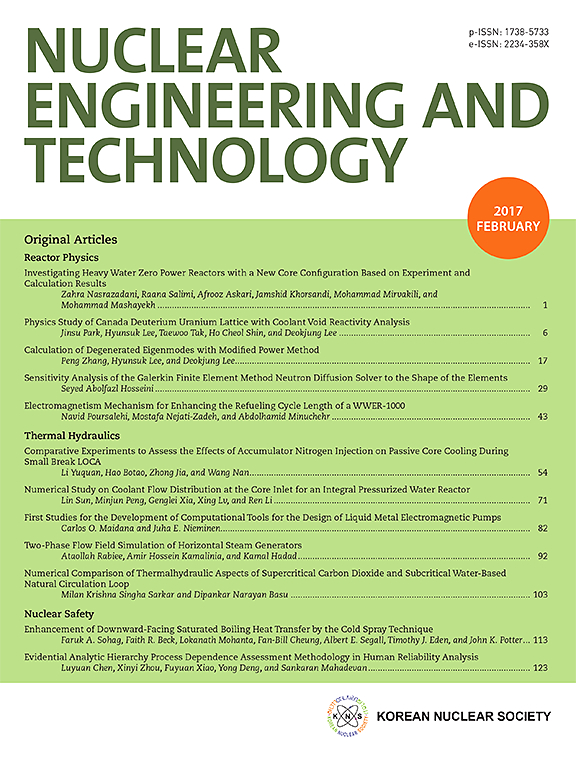比较采用新型自适应统计迭代重建技术与传统滤波反投影重建技术重建颞骨高分辨率CT图像质量
IF 2.6
3区 工程技术
Q1 NUCLEAR SCIENCE & TECHNOLOGY
引用次数: 0
摘要
比较一种新的自适应迭代重建技术与传统的滤波反投影技术在颞骨重建高分辨率CT扫描中的图像质量。评估客观(图像平均噪声、颞骨的噪比(CNR)和软组织的平均衰减值)和主观图像参数(图像噪声、图像对比度、颞骨的整体可见性/小结构的软问题可见性和总体诊断置信度)。18例患者在我院接受了标准的颞骨CT检查。用FBP和20%、40%、60%、80%的ASIR重建相同的原始数据。结果显示,图像测量显示软组织中的噪声明显小于ASIR的骨衰减值(p值0.05)。使用Wilcoxon符号秩检验。Filter back projection和ASIR Bone两种方法的百分比各不相同,但差异无统计学意义(p <;0.05)。对比Filter back projection Soft Tissue和ASIR Soft Tissue, ASIR-Soft Tissue的百分比各有显著差异,且优于FBP (p <;0.05)。注:数据为中位数,IQR=四分位数范围(25和75百分位)。软组织ASIR增加百分比差异有统计学意义。本研究得出结论,与ASIR和FBP CT颞骨检查相比,ASIR具有更好的降噪效果和更高的图像质量(客观和主观分析)。本文章由计算机程序翻译,如有差异,请以英文原文为准。
To compare the image quality of high resolution CT scan of temporal bone reconstructed using novel adaptive statistical iterative reconstruction-v technique with conventional filter back projection reconstruction technique
To compare the image quality of high resolution CT scan of temporal bone reconstruction using a novel adaptive iterative reconstruction-V (IR) technique with conventional filter back projection technique. The objective (mean image noise, contrast-to-noise ratio (CNR) for the temporal bone and the mean attenuation value of soft tissue) and subjective image parameters (image noise, image contrast, overall visibility of temporal bone/soft issue visibility of small structures and overall diagnostic confidence) were assessed. Eighteen patient underwent standard protocol of CT temporal bone at our institution. The same raw data were reconstructed using FBP and ASIR 20 %, ASIR 40 %, ASIR 60 %, ASIR 80 %.result shows that image measurements revealed significantly less noise in the soft tissue than bone attenuation value for the ASIR (p-value<0.05). Used Wilcoxon signed rank test. Filter back projection and ASIR Bone with various percentages but there no significant difference in two methods (p < 0.05). Comparing Filter back projection Soft Tissue and ASIR Soft Tissue, there is significant with in ASIR-Soft Tissue percentages various percentages and also it is better than FBP (p < 0.05). Note Data are indicated Median and IQR=Interquartile range (25th and 75th percentile). It is statistically significant difference of increasing percentage of ASIR percentage of soft tissue. This study concluded that ASIR shows superior reduction of noise and improved image quality (both objective and subjective analysis) compared with ASIR and FBP CT Temporal bone examination.
求助全文
通过发布文献求助,成功后即可免费获取论文全文。
去求助
来源期刊

Nuclear Engineering and Technology
工程技术-核科学技术
CiteScore
4.80
自引率
7.40%
发文量
431
审稿时长
3.5 months
期刊介绍:
Nuclear Engineering and Technology (NET), an international journal of the Korean Nuclear Society (KNS), publishes peer-reviewed papers on original research, ideas and developments in all areas of the field of nuclear science and technology. NET bimonthly publishes original articles, reviews, and technical notes. The journal is listed in the Science Citation Index Expanded (SCIE) of Thomson Reuters.
NET covers all fields for peaceful utilization of nuclear energy and radiation as follows:
1) Reactor Physics
2) Thermal Hydraulics
3) Nuclear Safety
4) Nuclear I&C
5) Nuclear Physics, Fusion, and Laser Technology
6) Nuclear Fuel Cycle and Radioactive Waste Management
7) Nuclear Fuel and Reactor Materials
8) Radiation Application
9) Radiation Protection
10) Nuclear Structural Analysis and Plant Management & Maintenance
11) Nuclear Policy, Economics, and Human Resource Development
 求助内容:
求助内容: 应助结果提醒方式:
应助结果提醒方式:


